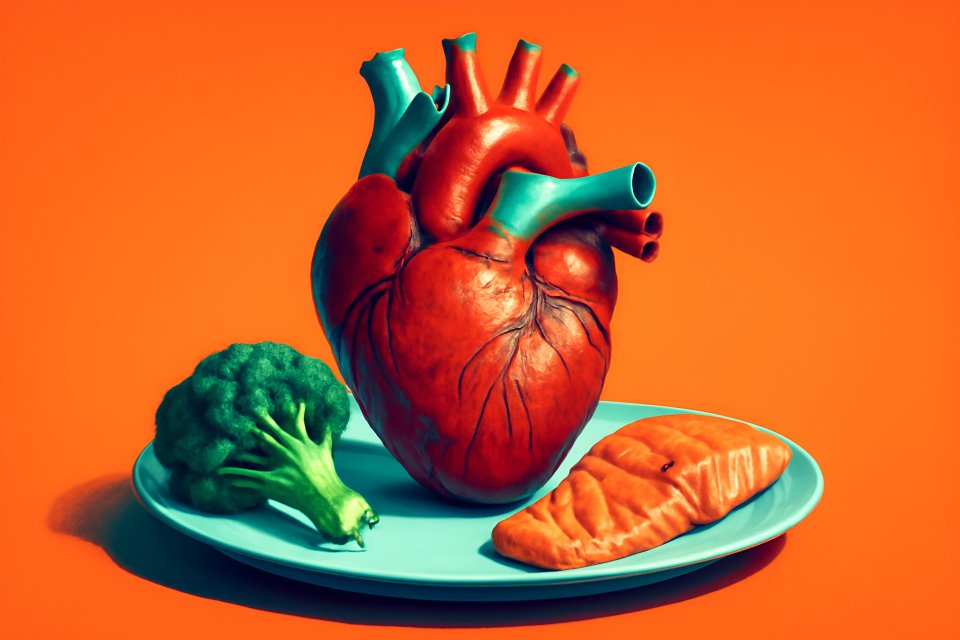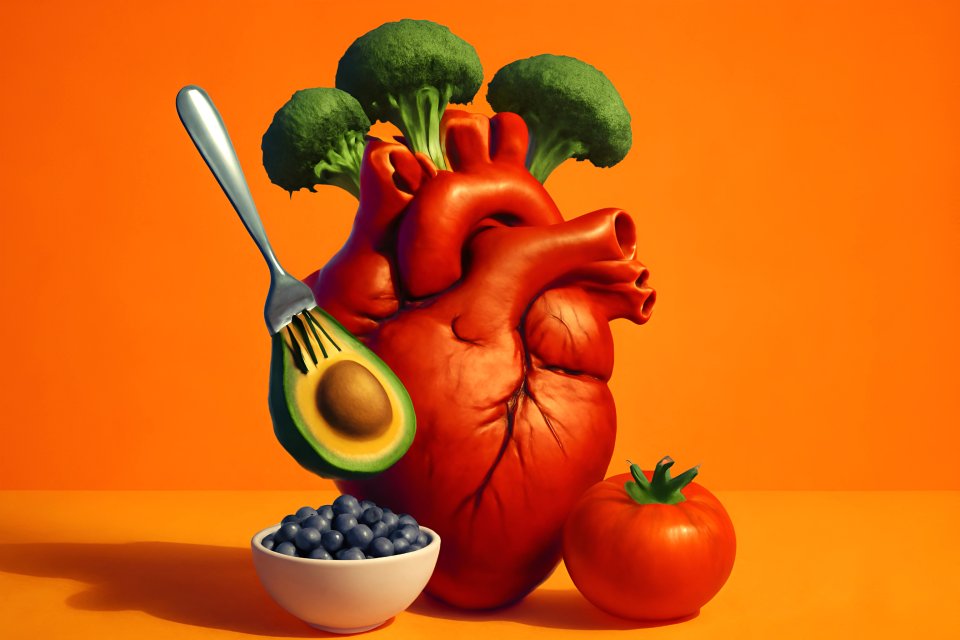
Do you find yourself dealing with more persistent aches, stiffness, or fatigue than you used to? You’re not alone. For many of us over 50, chronic inflammation is the quiet culprit behind these daily discomforts, silently undermining our vitality.
The good news is that one of the most powerful tools for fighting back is right on your plate. An anti-inflammatory diet isn't about deprivation; it's about choosing delicious, nourishing foods that help your body thrive and reclaim its energy. This is your chance to take back control and feel better than you have in years.
In this guide, we’ll walk you through a simple, step-by-step process to create a personalized diet plan for older adults that reduces inflammation, boosts energy, and supports your long-term health. Get ready to build a foundation for a more vibrant, active life.
First, What Is Inflammation and Why Does It Matter After 50?
Before we dive into the delicious foods that will become your new allies, it’s crucial to understand what we’re up against. What exactly is inflammation, and why does it become such a critical health factor as we age? The answer lies in understanding the two sides of this biological coin.
The Difference Between Helpful (Acute) and Harmful (Chronic) Inflammation
Think about the last time you twisted an ankle. The swelling, redness, and warmth you felt was acute inflammation at work—your body’s brilliant, short-term response to injury. It’s a necessary process that sends healing cells to the site of the problem to repair damage and fight off invaders.
Chronic inflammation, however, is a different beast entirely. It’s a low-grade, persistent state of alert that never fully shuts off, simmering throughout your body for months or even years. This constant internal fire can damage healthy cells and tissues, becoming a major driver of age-related health issues.
The Senior-Specific Impact of Chronic Inflammation
For those of us over 50, this simmering inflammation is not a minor annoyance; it's a direct threat to our quality of life. Research increasingly shows that a persistent inflammatory state is a key contributor to many of the conditions we fear most. It’s linked to the debilitating pain of arthritis, the development of heart disease, and even cognitive decline.
In fact, a long-term study highlighted by geriatric dietitians found a significant link between following an anti-inflammatory diet and achieving healthier aging. Creating a diet for chronic inflammation isn't just about feeling a little better—it's a powerful strategy for protecting your joints, your heart, and your mind for the long haul. This is about securing your future health and independence.
The Pillars of an Anti-Inflammatory Diet for Seniors
Building your anti-inflammatory arsenal is an act of empowerment. It’s about flooding your body with the nutrients it needs to cool the flames of chronic inflammation. Forget complicated rules and think instead about adding vibrant, powerful, and delicious foods to your daily routine.
Foods to Embrace: Your Inflammation-Fighting Toolkit
These are the cornerstones of your new way of eating. Think of them as your personal toolkit for building a stronger, more resilient body. Each one offers unique benefits specifically tailored to the needs of older adults.
- Fatty Fish (Salmon, Mackerel): These are loaded with powerful omega-3 fatty acids.
Senior-Specific Benefit: Supports brain health and provides profound relief for stiff, aching joints. - Leafy Greens (Spinach, Kale): These greens are packed with cell-protecting antioxidants.
Senior-Specific Benefit: They are an excellent source of Vitamin K, which is essential for maintaining strong bones. - Berries & Cherries: Their rich color comes from anthocyanins, potent anti-inflammatory compounds.
Senior-Specific Benefit: They help protect your cells from damage and can even ease post-activity muscle soreness. - Nuts & Seeds (Walnuts, Flaxseeds): A fantastic source of healthy fats and essential fiber.
Senior-Specific Benefit: These are champions for heart health, helping to maintain healthy cholesterol levels. - Olive Oil: The gold standard of healthy fats and a key part of the Mediterranean diet.
Senior-Specific Benefit: It contains oleocanthal, a compound with natural properties similar to ibuprofen. - Cruciferous Veggies (Broccoli, Cauliflower): These vegetables are high in a compound called sulforaphane.
Senior-Specific Benefit: They actively support your body’s natural detoxification processes. - Spices (Turmeric, Ginger): These ancient spices are some of the most potent anti-inflammatory agents available.
Senior-Specific Benefit: They offer natural pain relief and are excellent for supporting healthy digestion.
By focusing on adding more of these inflammation reduction foods, you naturally crowd out the less healthy options. For more delicious ways to incorporate these ingredients, explore these heart-healthy superfoods and recipes for seniors.
Foods to Limit: Common Inflammation Triggers
Just as important as what you add is what you choose to limit. This isn’t about banning foods or feeling guilty; it’s about being mindful of the common triggers that can stoke the fires of inflammation. Making simple, conscious swaps can make a world of difference.
The primary culprits are often found in highly processed items. Think sugary drinks and pastries, which cause blood sugar spikes that promote inflammation. Refined carbohydrates like white bread and pasta have a similar effect.
Be mindful of processed meats like sausages and hot dogs, as well as unhealthy fats, particularly trans fats found in many packaged and fried foods. You don't have to be perfect, but reducing your intake of these items is a critical step toward calming your system and feeling your best.
Your 5-Step Guide to a Personalized Anti-Inflammatory Meal Plan
Ready to turn knowledge into action? The secret to success isn’t a radical overhaul but a series of small, manageable steps. This five-step process will help you build a plan that feels right for you.
Step 1: Assess Your Starting Point
Before you change anything, take a moment to observe. For the next three days, keep a simple food journal. Don't judge or criticize; simply write down what you eat and drink.
This gentle self-audit will reveal your patterns. You might discover you’re already eating plenty of leafy greens, or you might notice that sugary snacks are a daily habit. This isn't about finding flaws; it's about identifying your greatest opportunities for a simple, powerful swap.
Step 2: Set One Realistic Goal for This Week
Forget trying to change everything at once. The key to lasting change is to focus on one small, achievable goal. Success builds momentum and confidence.
What could that look like? Maybe you'll commit to swapping your afternoon cookies for a handful of walnuts and an apple. Or perhaps your goal is to add a side of steamed broccoli to your dinner three times this week. Choose one thing that feels easy and stick with it.
Step 3: Build Your Plate the Anti-Inflammatory Way
Here is a simple visual rule to guide your meal construction. This method ensures you get a balanced mix of inflammation-fighting nutrients at every meal, making it an effortless part of your routine. It’s a core principle of any effective senior nutrition plan.
Imagine your dinner plate and divide it this way:
- ½ Plate: Fill it with colorful vegetables and fruits. Think spinach, broccoli, bell peppers, and berries.
- ¼ Plate: Dedicate this to lean protein. This could be grilled salmon, chicken breast, or plant-based options like lentils or beans.
- ¼ Plate: Add fiber-rich carbohydrates for sustained energy. Choose options like quinoa, brown rice, or a small sweet potato.
- Plus: Finish with a drizzle of healthy fat, like extra virgin olive oil on your salad or a few slices of avocado.
Step 4: Create a Sample Meal Plan & Shopping List
Seeing a plan in action makes it feel real and achievable. Here is a simple, one-day sample menu to show you just how delicious and satisfying this way of eating can be. This is not a rigid prescription, but a template for inspiration.
| Meal | Sample Anti-Inflammatory Meal |
|---|---|
| Breakfast | Oatmeal cooked with water or unsweetened milk, topped with fresh berries and a sprinkle of walnuts. |
| Lunch | A large salad with mixed leafy greens, topped with grilled salmon, cucumber, tomatoes, and an olive oil vinaigrette. |
| Dinner | Chicken stir-fry made with broccoli, bell peppers, fresh ginger, and garlic, served with a side of brown rice. |
| Snack | A crisp apple with a tablespoon of almond butter or a small bowl of plain Greek yogurt. |
This structure provides a fantastic starting point. For more detailed strategies and recipes, our guide to age-defying nutrition and meal planning is the perfect next step.
Step 5: Listen to Your Body and Adjust
This is the most important step: personalization. Your body is unique, and the goal is to find what works best for you. Pay attention to how you feel after a week of making small changes.
Do you have a bit more energy in the afternoon? Is the stiffness in your joints a little less noticeable? Use this feedback to guide your next steps. Remember to always consult with your doctor or a registered dietitian before making significant dietary changes, especially if you are managing chronic health conditions. Their professional guidance, as noted by experts at Berry Street, is invaluable for creating a safe and effective plan.
Beyond the Diet: Lifestyle Habits That Reduce Inflammation
Your plate is your most powerful tool, but a truly holistic approach incorporates other lifestyle habits that work in synergy with your diet. These simple practices can amplify your results and support your overall well-being.
First, stay hydrated. Water is absolutely essential for flushing inflammatory byproducts and toxins out of your system. Aim for plenty of plain water throughout the day to keep your body running cleanly and efficiently.
Next, incorporate gentle movement. You don’t need to run a marathon to reap the benefits. Activities like daily walking, gentle stretching, or yoga improve circulation and have been shown to lower key inflammatory markers in the body. For safe and effective ideas, check out our ultimate guide to joint-friendly exercise.
Finally, prioritize sleep and manage stress. A lack of quality sleep and high levels of the stress hormone cortisol are two of the biggest drivers of chronic inflammation. Creating a relaxing bedtime routine and exploring mindfulness techniques can have a profound impact. For a deeper dive, explore these integrative approaches for stress-free living.
Your Journey to a Healthier, More Vibrant You Starts Now
You now hold the blueprint for taking decisive action against chronic inflammation. This isn't a temporary diet; it's a sustainable lifestyle that puts you back in the driver's seat of your health. Remember that fighting inflammation is an achievable goal, one delicious meal at a time.
The key is to focus on adding an abundance of nourishing, vibrant foods, not on deprivation. Personalization and consistency are your true secrets to long-term success. You have the power to soothe your joints, protect your heart, and sharpen your mind.
We'd love to hear from you! What is the first anti-inflammatory food you plan to add to your plate this week? Share your commitment in the comments below.












